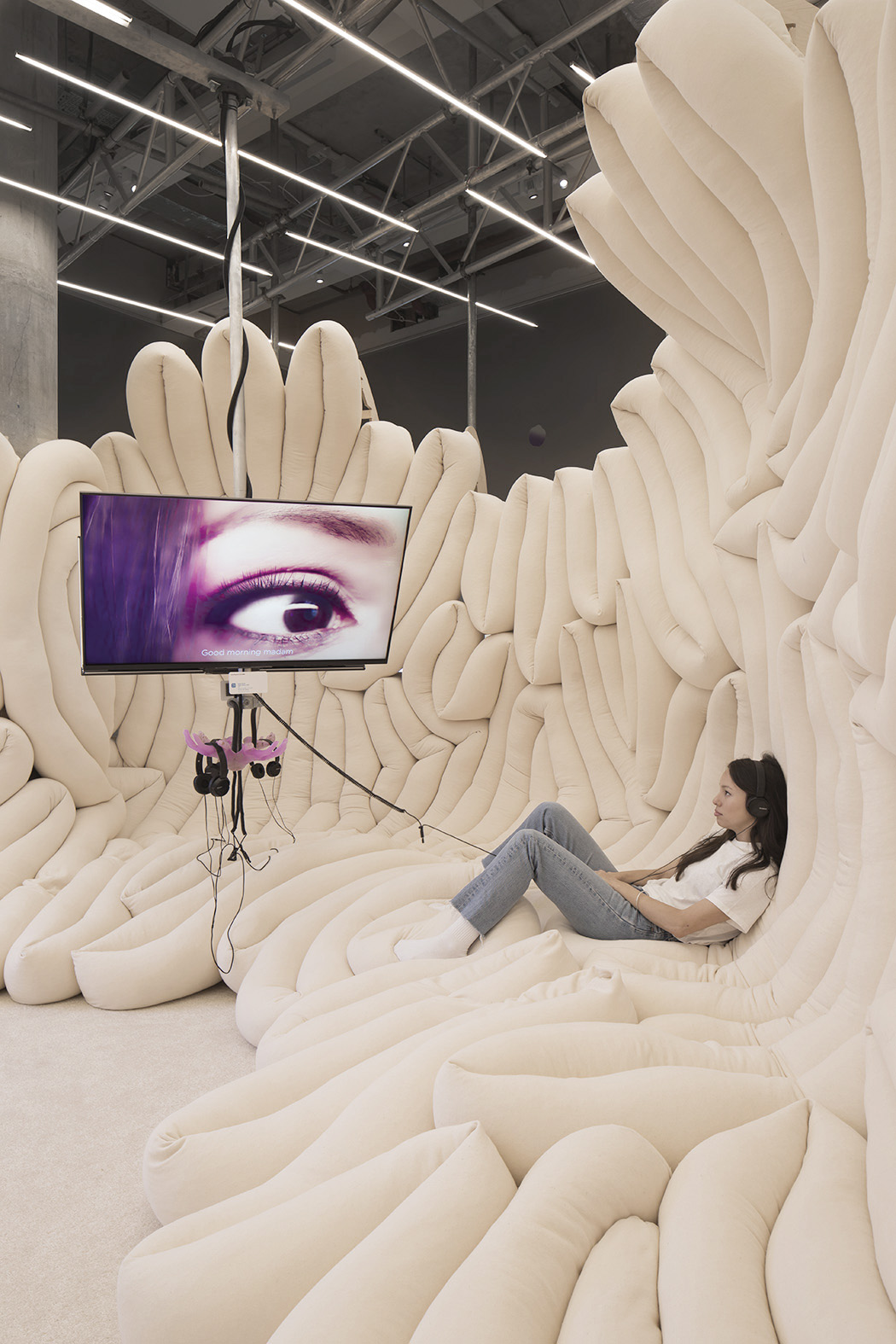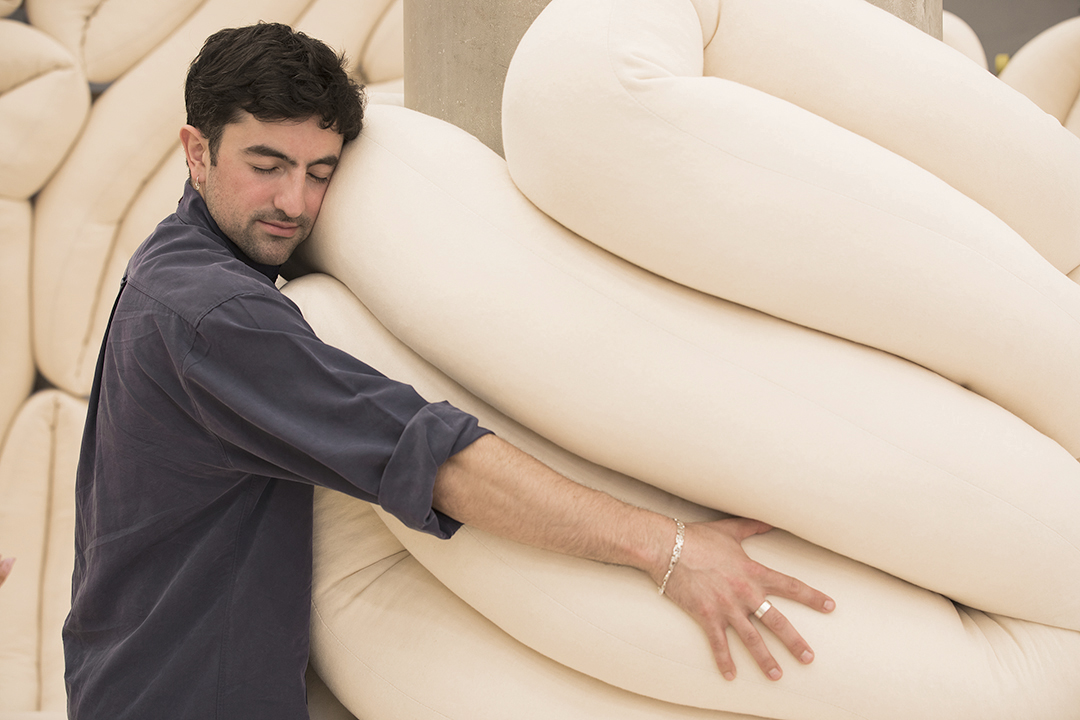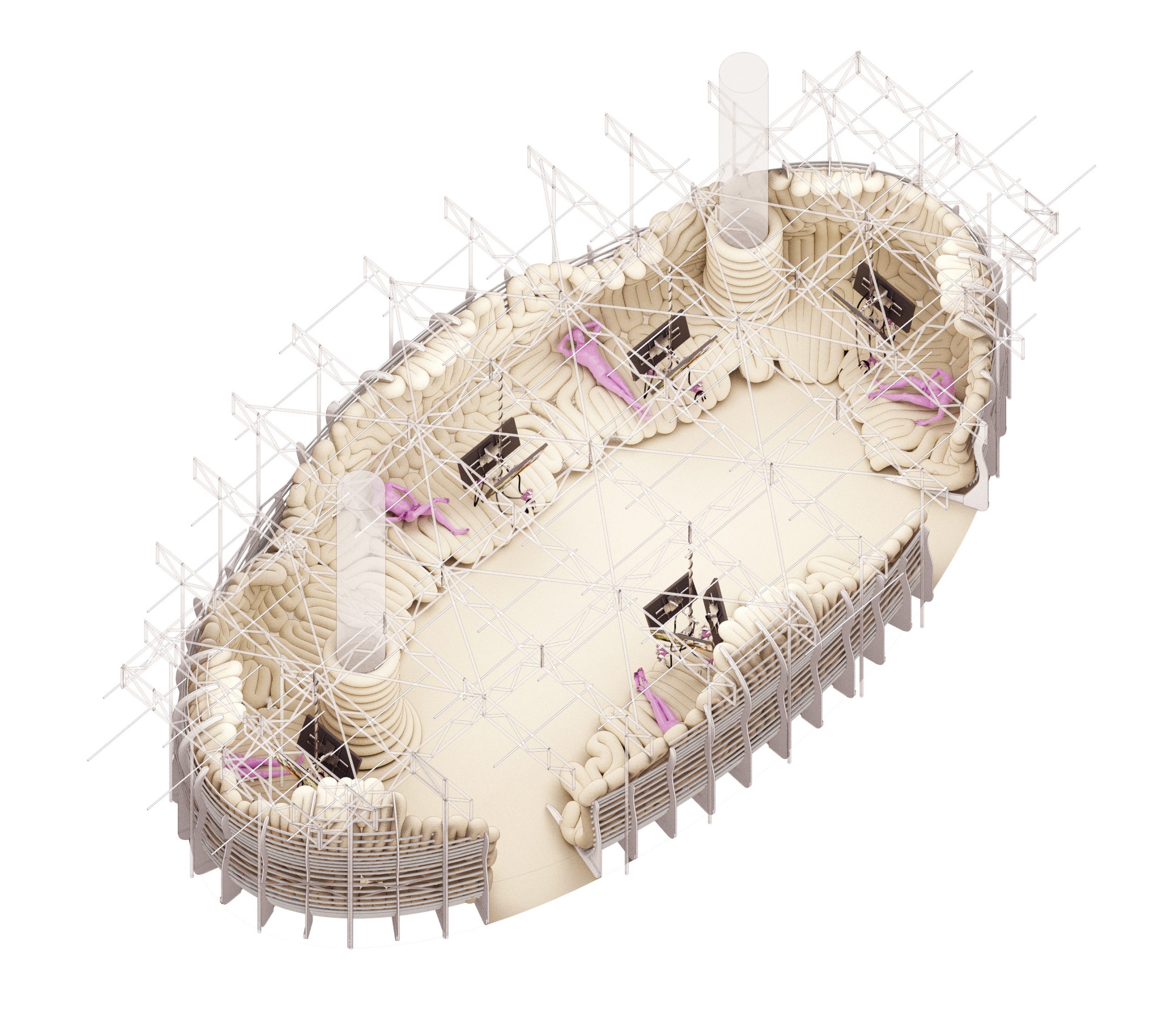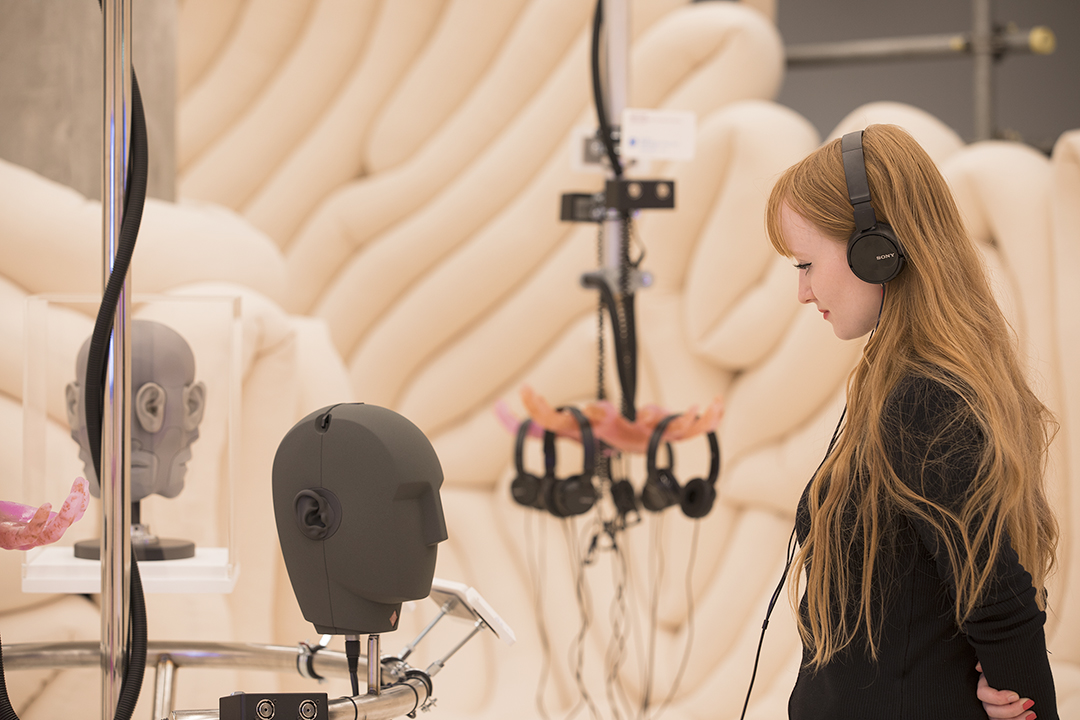Exhibition Weird Sensation Feels Good: The World of ASMR at the Design Museum in London
Brief description of the project
The exhibition’s architecture attempts to synthesise the creative field of ASMR and its rich material world into a legible spatial language. Drawing influence from traditional spa cultures, flowing water is replaced by streams of contemporary media, aiming to create an atmosphere of safety and privacy in public, in which multiple people can be triggered to relax simultaneously. The design of the exhibition offers a new public space — an acoustically saturated environment, allowing the exhibit’s visitors to immerse themselves in a multi–sensory experience of looking, listening, and feeling closely.
Originality and creativity of the idea
WEIRD SENSATION FEELS GOOD is the first museum exhibition dedicated to ASMR — it explores new ways of feeling good and tries to find a format to share the experience in a public environment. The exhibition attempts to bring both body and mind to a state of comfort and heightened sensitivity. The exhibition’s architecture attempts to synthesise the creative field of ASMR and its rich material world into a legible spatial language — digital culture transformed into physical form.
ASMR injects the Internet with tenderness and empathy. ASMR is used as a form of self-medication to treat the effects of loneliness, insomnia, stress and anxiety. These healing properties can give a new dimension to educational institutions (schools, kindergarten), wellness (spa), and health care (hospitals and rehabilitation centres). Some of our ASMR furniture has been observed to have beneficial effects on depressed, anxious people.
Definition of the problem and the relevance of the applied solutions
ASMR is usually experienced in the bedroom — an intimate space where one feels protected. The exhibition’s challenge was creating a space where visitors would feel comfortable and safe to experience ASMR collectively. This required a complete rethinking of the approach to architecture and the invention of a new kind of public space — an ASMR arena to experience ASMR.
We believe this exhibition is unique in the museum context in that it encourages visitors not to pass through but to linger, using the exhibits as relaxation stimuli. It is an experience-driven space that transports the visitor to a new world.
Instead of overloading visitors with information, it tries to do the opposite, using audio-visual stimuli to reach a state of deep relaxation.
Co-creation, stakeholder involvement and cooperation during the realisation process
The exhibition was created in close cooperation with the exhibition curators James Taylor-Foster (curator of contemporary architecture and design at ArkDes) and Esme Hawes (curator at the London Design Museum), as well as artists, authors of exhibits, as well as the London Design Museum and the Stockholm Centre for Architecture and Design.
A close collaboration was established with the authors of the exhibition's graphic design, Agga Mette Stage and Alexander Söder, whose work was also translated into the space.
The tube seating outside the ASMR arena was created together with the main supporter of the exhibition — Ultrafabrics.
Kopā ar izstādes galveno atbalstītāju – “Ultrafabrics” tika radītas lielo tūbu sēdvietas ārpus ASMR arēnas.
Functionality and technological solutions
The ASMR arena — an oval-shaped pavilion is built in the centre of the exhibition, while individual thematic parts are arranged as "neural nodes" around it — the infrastructure of the exhibition, such as round and concave railing objects to which the exhibits are attached. The arena’s walls blend into the floor and gently fold inward to embrace the visitor with soft biomorphic cushions. Their geometry follows lichen growth patterns while referencing the body's internal tissues, brain folds, audio cables and irregular waveforms. Upon entering the arena, visitors take off their shoes to find their most comfortable positions on the gigantic elliptical sofa bed. They immerse themselves in ASMR audiovisual streams and observe each other. The arena is covered by a "technological cloud", which carries a pulsating, diffused light field, and "TV chandeliers" — structures of suspended video works.
Aesthetics and other experiential dimensions
Strange beauty, contradictory beauty. A fusion of technology and human form. Materiality that we can "taste with our eyes". The architect Dina Suhanova described her experience in the arena as "feeling like a tourist in the space of her own consciousness". The way visitors interact with the sofa bed seems particularly attractive. Some rub their feet against the natural cotton terry pillows, while others fall asleep with their mouths open. The size of the tubular pillows resembles the scale of the parts of the human body. Silicone fingers and epoxy hands reach out towards the visitor in a strange and unusual yet satisfying way.
A vital exhibition topic is the relationship between technology and the human body in material and tactile form — "the seeming sensitivity of technology". Devices such as ultra-sensitive microphones, headphones, and screens — give us new superpowers to relax.
Economic significance, sustainability and circularity
The ASMR arena is a movable public space of 100 square meters that can be dismantled and assembled elsewhere. The structure consists of four types of plywood ribs and scaffolding elements, whose production uses only ten standard-sized veneer sheets. The tubular pillows are sewn from organic cotton terry made in Pärnu and attached to the wooden structure of the arena with plastic ties. The textile is unbleached and undyed, so it has a natural, almost white (beige) texture. Light construction — the technological cloud is built from rented prefabricated racks. The silicone fingers and epoxy hands filled with planed shavings were handmade right here in Riga.
Social relevance, inclusion, availability and accessibility
The exhibition was created for audiences of all age groups — both children, who have the freedom to feel the objects, and people in their old age, who are given comfortable moments of rest. The exhibition as a whole and the video "chandeliers" in the arena are designed to rotate around their axis to ensure accessibility for visitors in wheelchairs. It is significant that the exhibition, with its content and form, has attracted museum visitors who have never been to the museum, for example, teenagers who come from the suburbs because they recognised a specific ASMR video, as well as also TikTokers, YouTubers, simple tourists, brand representatives, design experts, cultural field representatives, etc.





